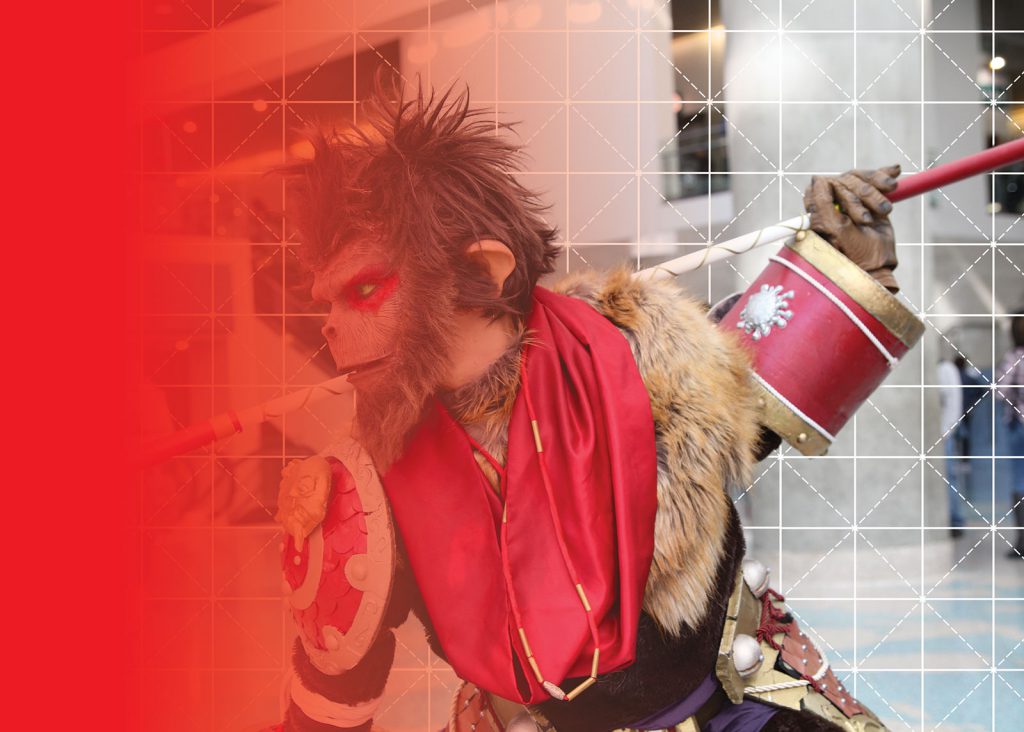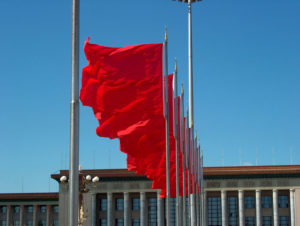The year 2016 was the Year of the Monkey, and no monkey is more iconic in China than Sun Wukong 孙悟空, the mischievous and beloved Monkey King of Chinese mythology. A central character in the sixteenth-century classic Journey to the West 西游记, ‘Monkey’ was born from a stone, and enjoys tremendous powers thanks to Taoist practices and a magical staff. When he creates havoc in the Jade Emperor’s heavenly palace, the Buddha sends Monkey on a journey across the seemingly infinite expanse of his palm, finally trapping him under a mountain, where he remains for five hundred years. The Buddha promises Monkey his freedom if he agrees to protect the monk Xuanzang 玄奘 on his journey to collect the Buddhist classics from India and bring them back to China. But knowing Monkey’s capacity for mischief, the Buddha gives Xuanzang a headband that once placed on Monkey’s head can never be taken off, teaching him a magical incantation that enables the monk to painfully tighten the headband. The pain — or the threat of it — keeps Monkey under control throughout the long journey.
‘Control’ is the theme of the China Story Yearbook 2016. Each year, surveying the official and unofficial discourse from China, we choose a Chinese character that illustrates an overarching theme from that year’s political, economic, social, and cultural events. The character zhi 治 is our keyword for 2016. While it can be translated as control, this is only one of its many meanings. It also signifies to manage, govern, supervise, or take care of; to harness; and to arrange or put in order. It can also mean to punish, to cure (an illness), to exterminate (an agricultural pest or disease, for example), to research (zhi shi 治史, for example, is the study of history), to pacify and settle, and to stabilise. In historical times, it indicated the seat of local government (See ‘Between Order and Chaos’). Its most common antonym is the word for chaos, confusion, and disarray: luan 乱.
Since his ascension to the presidency and leadership of the Chinese Communist Party (CCP) in 2012, Xi Jinping 习近平 has steadily expanded his personal control over the Party, the Party’s control over the state, and the state’s control over its citizens. This trend continued in 2016.
Xi has personally assumed the leadership of so many commissions and ‘central leading groups’ that in the China Story Yearbook 2014: Shared Destiny, founding editor Geremie R. Barmé dubbed him the ‘chairman of everything’. In April 2016, he added a powerful new role to the list: Commander-in-Chief of the People’s Liberation Army’s newly formed Joint Operations Command Centre. In October, the Sixth Plenum of the Eighteenth Central Committee of the CCP conferred on him the status of ‘core leader’ 核心领导人, an official appellation he now shares with the three strongest leaders of post-1949 China — Mao Zedong 毛泽东, Deng Xiaoping 邓小平, and Jiang Zemin 江泽民.
Many observers in the media and academic circles both in China and overseas have sought the right words to describe China’s unusual meld of Communist ideology, media-savvy propaganda, quasi-free market economics, social control, and authoritarianism: a unique political and economic system to which Xi Jinping is adding his own personal, and powerful, touch. In his 2016 book, The Perfect Dictatorship: China in the 21st Century, Norwegian political scientist Stein Ringen coins the term ‘controlocracy’ for this system in which ‘[t]he state controls society, and the party controls the state. There is a double system of control. Control is in this state’s nature’.1 Coinciding with our choice of ‘Control’ for this Yearbook’s theme, this term strikes us as being rather apt (even if Ringen’s analysis is open to criticism.)
Cure Thyself
The importance of control for the Chinese concept of governance is implicit: the word for politics in Chinese is zhengzhi 政治, where 政 is a character referring to the administrative aspects of government. Just as the monk Xuanzang uses incantatory words to control (manage, harness, stabilise, punish) the chaos that is Monkey, the CCP today employs tifa 提法, official formulations to control (manage, supervise, harness, stabilise, punish) chaotic tendencies not just in society as a whole but, as Gloria Davies writes in her chapter ‘The Language of Discipline’, within the Party itself. As she points out, the phrase ‘comprehensive and strict Party governance’ 全面从严治党, in which the character 治 is placed directly before the character for the Party, appears no less than fifteen times in the 2016 Sixth Plenum’s official communiqué.
Zhi 治 can also mean to ‘cure’. If there is one thing that threatens the Party’s legitimacy more than any other, it is the disease of corruption, which Xi Jinping has sought to cure since launching his anti-corruption campaign in 2013. Christian Sorace observes in his essay on ‘Communist Party Immunology’ that the Party ‘conceptualises itself as a living organism that is self-conscious of its own mortality’. This is reminiscent of Chairman Mao’s metaphor of ‘curing the sickness to save the patient’, used as early as 1942 to rectify problems within the Party.
Natalie Köhle takes a look at cures from a more literal perspective in ‘Cups, Needles, and Noxious Blood’, about the national and international revival of cupping, acupuncture, and humoralism, made visible by the widespread use by athletes during the Rio Olympics. The Party itself has certainly suffered from excesses of bile and blood in the past — the most emblematic of these being the ultra-left, ultra-violent Cultural Revolution incited and led by Mao Zedong from 1966–1976. Faced with two highly sensitive and uncomfortable anniversaries — the fiftieth anniversary of the launch of the Cultural Revolution on 16 May 1966 and fortieth anniversary of the death of Mao on 9 September 1976 — the Party tightened its already tight grip over history in 2016. As Lorand Laskai writes in ‘Dreaded Anniversaries’, on 16 May the People’s Daily issued a tight-lipped commentary describing the Cultural Revolution somewhat enigmatically as ‘a major complication in the development of our party and country’. Otherwise, the Party-state did its best to control (or rather exterminate) public discussion and to prevent alternative views from appearing on the tightly-policed Chinese Internet.
They could not exterminate that discussion altogether, however. Historian Yang Jisheng 杨继绳, author of Tombstone: the Great Chinese Famine 1958–1962 墓碑:中国六十年代大饥荒纪实, sent his latest manuscript, The Overthrow of Heaven and Earth — A History of China’s Great Proletarian Cultural Revolution 天地翻覆 - 中国文化大革命历史, to Hong Kong, where Cosmos Books published it towards the end of the year (a translated excerpt from the preface is here).
History has long been a battlefield in China, with control over the narrative being the victor’s prize. In dynastic times, each dynasty rewrote the history of its predecessor to emphasise its own legitimacy. In revolutionary times, the Party has not only rewritten aspects of dynastic and republican history several times, it has also revised its own history numerous times to play down inconsistencies, and erase violent episodes and bad decisions.
In ‘Trouble with the Past’, Nathan Woolley describes a skirmish over an episode from the history of the anti-Japanese resistance, ‘The Five Heroes of Langya Mountain’. The story goes that under fierce siege from the Japanese, the five threw themselves off the mountain rather than surrender, shouting, ‘Long live the Communist Party!’ The tale has been a propaganda staple for decades. In 2016, a citizen who questioned certain aspects of the story landed in jail, while the editor of a prominent intellectual historical journal who went further in questioning the official account was publically vilified, lost his job and faced a judgement by the People’s Supreme Court that by damaging the Party’s reputation, he had also harmed the public interest.
Control and Command
The Party-state aspires to control — in the sense of eliminate — many diverse phenomena that they perceive as offensive, immoral, threatening or simply unsafe. Nick Stember’s ‘banned list’ over the last two years gives a snapshot of this diversity, ranging from American horror movies, Bon Jovi and April Fool’s Day to Muslim names, Pokémon GO, live Internet streams of women wearing stockings and suspenders eating bananas (yes, this is a thing), and some twelve thousand ‘sensitive’ words.
Words don’t necessarily have to be sensitive to be banned. As Annie Drahos writes in ‘Ungeilievable: Language Control in the Digital Age’, the government’s ongoing push to modernise and digitise bureaucratic documents and records has made people with rare or ancient characters in their names unable to do ordinary things such as open a bank account or sit the crucial gaokao 高考 exam for university admittance. The digital sphere more broadly, of course, has long been an area of active government control, with a vast army of censors constantly patrolling the Internet to exterminate everything from ‘rumours’ to cyber loan-sharking, as seen in the essays by Lorand Laskai and Nicholas Loubere in the Forum ‘Computer Says No’.
Trying to control (govern, supervise, harness) the Internet, is, as Lorand Laskai suggests (quoting a Bill Clinton phrase), like ‘nailing jello to a wall’. Yet the Chinese government is clearly managing to do this better than most. In 2016, China earned the title of the world’s ‘worst abuser of Internet freedom’ on the independent watchdog Freedom House’s annual scorecard, while US officials labelled China’s Internet controls a ‘trade barrier’. In early 2017, Luo Fuhe 罗富和, the vice-chairman of the Chinese People’s Political Consultative Conference, acknowledged that Internet censorship in China was impeding both economic development and scientific research. This is a high price to pay for a government intent on sustaining long-term growth and lifting the economy out of its middle-income status.
Internet control also featured in some of the biggest stories in Chinese arts and culture in 2016. In the cultural sphere, over the decades of reform, a de facto compromise has been reached. The Party implicitly acknowledges that not all artistic products must serve ideology (you can have, for example, abstract art or rom-com films). Those working in the arts, in return, understand that they are not to challenge either the Party or its ideology (at least if they want to show or sell what they are making). Xi is trying to reassert the Party’s control over cultural production. But it’s not that simple in the age of social media, commercial filmmaking, and globalised production. As Linda Jaivin’s ‘Culture: In and Out of Control’ illustrates, the Party-state can control the kind of films that can be made and released, but it can’t control how people will react to them, on- or off-line.
It’s a different story when it comes to outright challenges to the authority of the Party and state, however. In 2016, Xi Jinping’s government, never soft on crime or dissent, went harder still. In ‘Control by Law’, Susan Trevaskes and Elisa Nesossi show how Xi has further elaborated the policy (enshrined in the Constitution) of ‘governing the nation in accord with the law’ 依法治国 to, as they write, create ‘a more intimate relationship between law and politics than was the case when the phrase first came into use twenty years ago.’
On the one hand, the Party-state continued to reform the judicial process to make it more transparent, fair and efficient. On the other, official pronouncements increasingly equated the notion of the ‘rule of law’ with ‘rule by the Party’, making ‘governing the nation in accordance with the law’ synonymous with ‘governing the nation in accordance with the Party’. Unsurprisingly, it ramped up its war on those viewed as dissenters.
Labour activists were another group of ‘dissenters’ who suffered a difficult year in 2016: an annus horribilis according to Ivan Franceschini. His forum explores the tactics employed by Chinese authorities — including the mysterious State Security, in charge of preventing infiltration by ‘hostile foreign forces’ — to control the activities of labour activists trying to promote workers’ rights. Learning to manoeuvre between these authorities is particularly challenging during a period of economic slowdown, providing regional officials with the excuse they needed to freeze minimum wages and reduce labour protections.
According to Plan
Following nearly four decades of economic reform, China’s economy has become a unique hybrid of free market activity and state supervision and control. The Party-state still adheres to the old Soviet practice, designed for a centralised command economy, of producing five-year plans that detail a vast number of economic objectives alongside benchmarks for social and cultural progress, although recent plans look more like guidelines than the fully fledged target-based plans in the past. In 2016, with great fanfare and promotion across social media as well as the usual channels, the government revealed its Thirteenth Five-Year-Plan. Luigi Tomba looks at the history of such plans, how some non-communist countries have adopted the practice and how China’s plan has evolved over time. This latest plan has such a strong environmental emphasis, Tomba notes, that it could put China at the ‘forefront of moves towards a low-carbon global economy’.
The forum ‘The Environment: Control and Punishment’ surveys the latest environmental disasters, along with the government’s ongoing attempts to harness the potential for low-carbon growth. This involves a range of strategies beyond the Thirteenth Five-Year Plan, from the Supreme People’s Court’s largest-ever fine for illegal waste disposal in a public interest case to the ratification of the Paris Agreement on climate change, an action credited with encouraging many other countries to sign on as well. While much of the news remains grim, China looks on track to become the world’s first renewable energy superpower — and arguably faster than it would have done by adopting a laissez-faire approach.
Another area in which the government is attempting to produce more rational social and economic outcomes concerns China’s vast population, which has long been subject to various forms of government control. On the first day of 2016, the Party-state enacted a landmark change in population policy, ending the One-Child Policy that had been in place since 1980 and replacing it with a Two-Child Policy. As Jane Golley explains in ‘Population and the Economy: The Ups and Downs of One and Two’, this policy shift has potentially profound implications for China’s economic growth, its environment and the welfare of its citizens — but only if people actually have more babies. This will likely prove harder to control than preventing births in the past.
Borderlines
On 25 December 2016, Wang Yusheng 王嵎生, a senior diplomat, published a commentary in the Liberation Daily 解放日报, widely reprinted in state media, under the title ‘The three big characteristics of the international situation in 2016: “chaos”, “change”, and “control” ’.
Wang described the year in foreign affairs as full of uncertainty. Chaos 乱 was everywhere, from American threats and ‘interference’ in the South China Sea to the refugee crisis in Europe, the coup in Turkey, terrorist attacks in northern Africa and elsewhere, and the impeachments of Dilma Rousseff in Brazil and of Park Geun-hye in South Korea. Change was the ‘main melody’ of 2016, including the populist movements that brought Duterte to power in the Philippines and Trump into the presidency in the US. As for control, Wang spoke of the people’s desire for stability, development, and a peaceful world, stating that the world didn’t belong to the US or China, or the two of them together.
Yet despite such public assurances, throughout 2016 China continued to assert its sovereign interests in the South China Sea, as well as to intervene in Hong Kong’s affairs in what Anthony Dapiran describes as a ‘never-ending game of whack-a-mole’. In Taiwan, the election of Tsai Ing-wen 蔡英文 as President in January 2016 gave rise to new cross-Strait tensions, which Mark Harrison sees as increasingly unresolvable in ‘A Year of Looking Backwards’. Tsai’s much-publicised phone call with Donald Trump in December, the first between a US president or president-elect and a Taiwanese leader since the US broke off diplomatic relations with Taiwan to establish them with the People’s Republic in 1979, was generally well received in Taiwan even as it drew Beijing’s ire.
Looking further afield, Beyongo Mukete Dynamic looks at how controversies over pollution linked to Chinese mining have played out in Zambia. Gerry Groot, meanwhile, describes both the soft power initiatives and the direct interventions through which China expanded its international influence in 2016. Other stories in this Yearbook cover the panic over Chinese migrants’ real estate investments in British Columbia and the phenomenon of recent Chinese immigrants to the US voting for Trump.
Mao and Then, Xi and Now
The former Chairman Mao Zedong’s legacy to control is a mixed bag for the contemporary Chinese Party-state. Among the many sayings for which the former chairman was known — and a particularly iconic one at that — was ‘All under heaven is in chaos, the more chaotic the better, it confuses our enemies, and toughens up our masses’ 天下大乱,越乱越好,乱了敌人,锻炼了群众. But he also said: ‘From great chaos under heaven we can attain supreme control.’ 天下大乱,达到天下大治. (For more on ‘all under heaven’, see the China Story Yearbook 2013: Civilising China, Forum ‘Tianxia 天下’.) While Xi is a greater fan of control than chaos, he is well aware that his ability to control the Party (and the people) owes much to the historical legitimacy and legacy of Mao. As a result, Xi pays great homage to Mao, and the Party under him takes great care to control (restrict or eliminate) criticism of the Great Leader and the less glorious aspects of the Party’s past.
Xi’s ability to exercise control in the future will hinge on the outcome of the CCP’s Nineteenth National People’s Congress, to be held in the northern autumn of 2017, and at which the majority of the Politburo’s powerful Standing Committee is expected to retire. The delegates to the Congress will elect new leaders for central bodies such as the Central Military Commission as well as the Party itself. Xi will almost certainly be elected to a second term as president, and continue in his other posts as well. But observers will be watching what happens to key allies of Xi, such as Wang Qishan 王歧山, who, as head of the Central Commission for Discipline Inspection, has been crucial to the execution of Xi’s anti-corruption drive. Wang is sixty-eight and, according to Party regulations, should retire. If Xi bends the rules to let Wang continue in his post, he may possibly establish a precedent for himself to push for a third term at the helm at the next Congress, when he will be sixty-nine. If successful, he will become the most powerful leader of China since Mao. Stein Ringen’s depiction of what this powerful ‘controlocracy’ would mean for Chinese citizens, and indeed the rest of the world, is sobering at best.
The China Story Yearbook
The China Story Yearbook is a project of the Australian Centre on China in the World (CIW) at The Australian National University (ANU). It is part of a broad undertaking aimed at understanding what we call the China Story, both as portrayed by official China, and from various other perspectives.
The Centre is dedicated to a holistic approach to the study of contemporary China: one that considers the range of forces, personalities, and ideas at work in China as a means of understanding the spectrum of China’s sociopolitical and cultural realities. CIW fosters such an approach by supporting humanities-led research that engages actively with the social sciences. The resulting admixture has, we believe, academic merit, public policy relevance, and value for the engaged public. The Yearbook is aimed at a broad readership that includes the general public, scholars from all fields, as well as people in business and government.
Most of the scholars and writers whose work features in the China Story Yearbook 2016: Control are members of, or associated with CIW. They survey the China of Xi’s fourth year as leader of the Party and state through chapters, forums, and information windows on topics ranging from economics, politics, and China’s regional posture through urban change, social activism and law, the Internet, cultural mores, and present-day Chinese attitudes to history and thought. Their contributions, which cover the twelve-month period in 2016 with some reference to events in early 2017, offer an informed perspective on recent developments in China and what these may mean for the future.
Ganxie (Acknowledgements)
The editors would like to acknowledge the tremendous collaborative effort that each year sees the production of the China Story Yearbook. Lorand Laskai, of the former Danwei CHK, organised the team that contributed so many of the boxes and shorter pieces that so greatly enliven the book and expand its range; he is also responsible for the chronology. Paul Farrelly contributed the explanations to the keywords (which are marked in this way throughout the work, with explanations at the end of the Yearbook). We are deeply grateful to Lindy Allen for proofreading an early version, and to Sharon Strange for project management and typesetting. And we owe a lasting debt to the founding director of CIW and editor of the first three volumes of the China Story Yearbook, Professor Geremie R. Barmé.
The Cover Image

Cover of the China Story Yearbook 2016 Artwork: CRE8IVE, Canberra
The character on the cover of this Yearbook is zhi 治, ‘to control’. It is written in that form of calligraphy known as kaishu 楷書, or regular script. The kai 楷 of kaishu means ‘a model’ or ‘a pattern’. It is the form of script learnt first by Chinese children, and for those who take up the brush and ink, it is the form of writing that first demands of them firm fine motor control. It is also the form of script associated with official documents and pronouncements. The zhi on the cover is placed in a grid that is used for calligraphy practice where the learner traces the strokes rendered in half tone on the page. The cover image therefore connotes ideas of regulation, repetition, and order, where the character for control is repeated, reiterated, and confined.
Notes
Stein Ringen, The Perfect Dictatorship: China in the 21st Century, Hong Kong: Hong Kong University Press, 2016, p.1, online at: http://www.jstor.org/stable/j.ctt1d4tz8w
Wang Yusheng, 王嵎生, ‘The three big characteristics of the international situation in 2016: “chaos”, “change”, and “control” 2016年国际形势三大特点:“乱”“变”“治” ’, Liberation Daily, 25 December 2016, online at: http://www.chinanews.com/gj/2016/12-25/8104021.shtml













